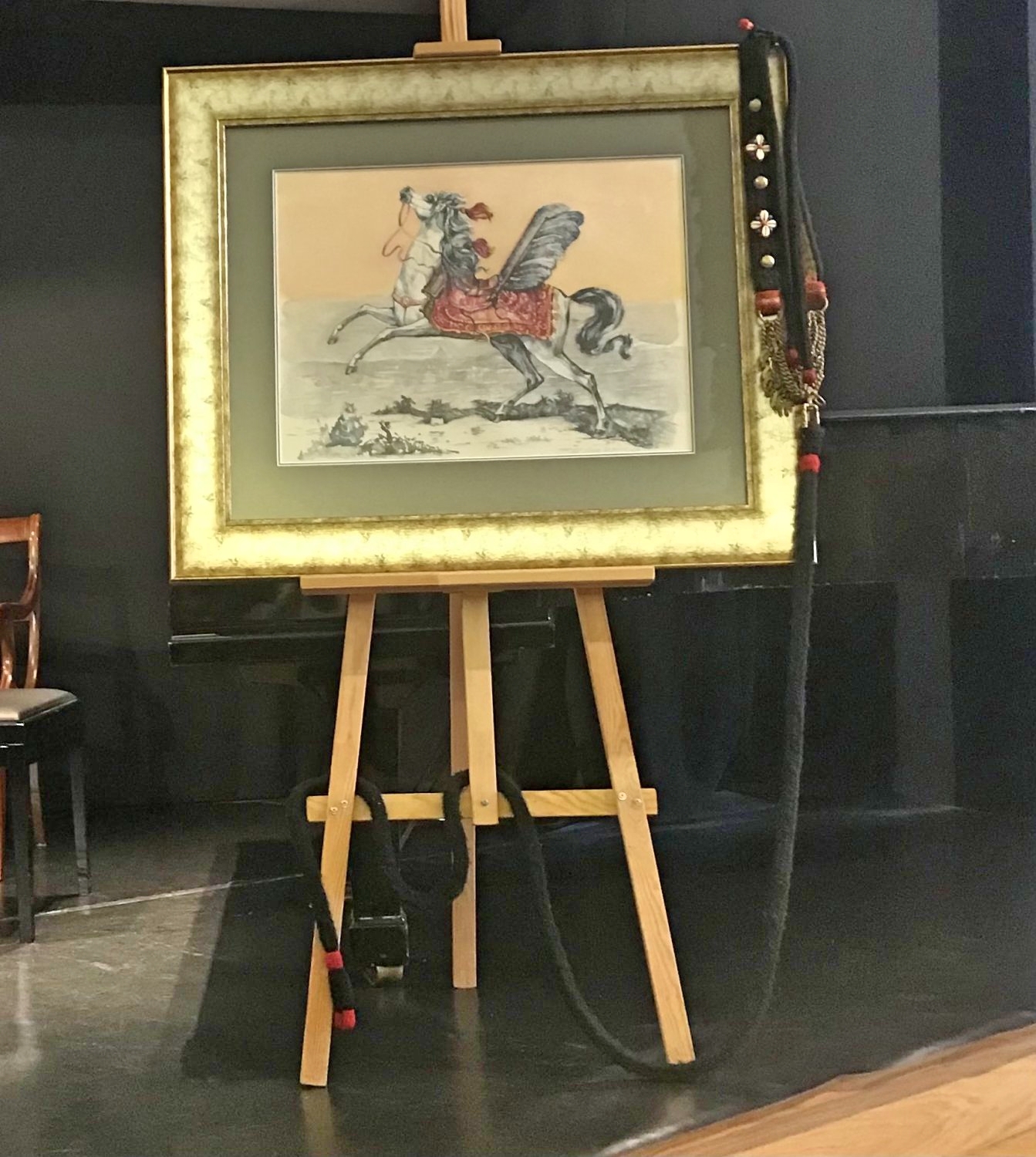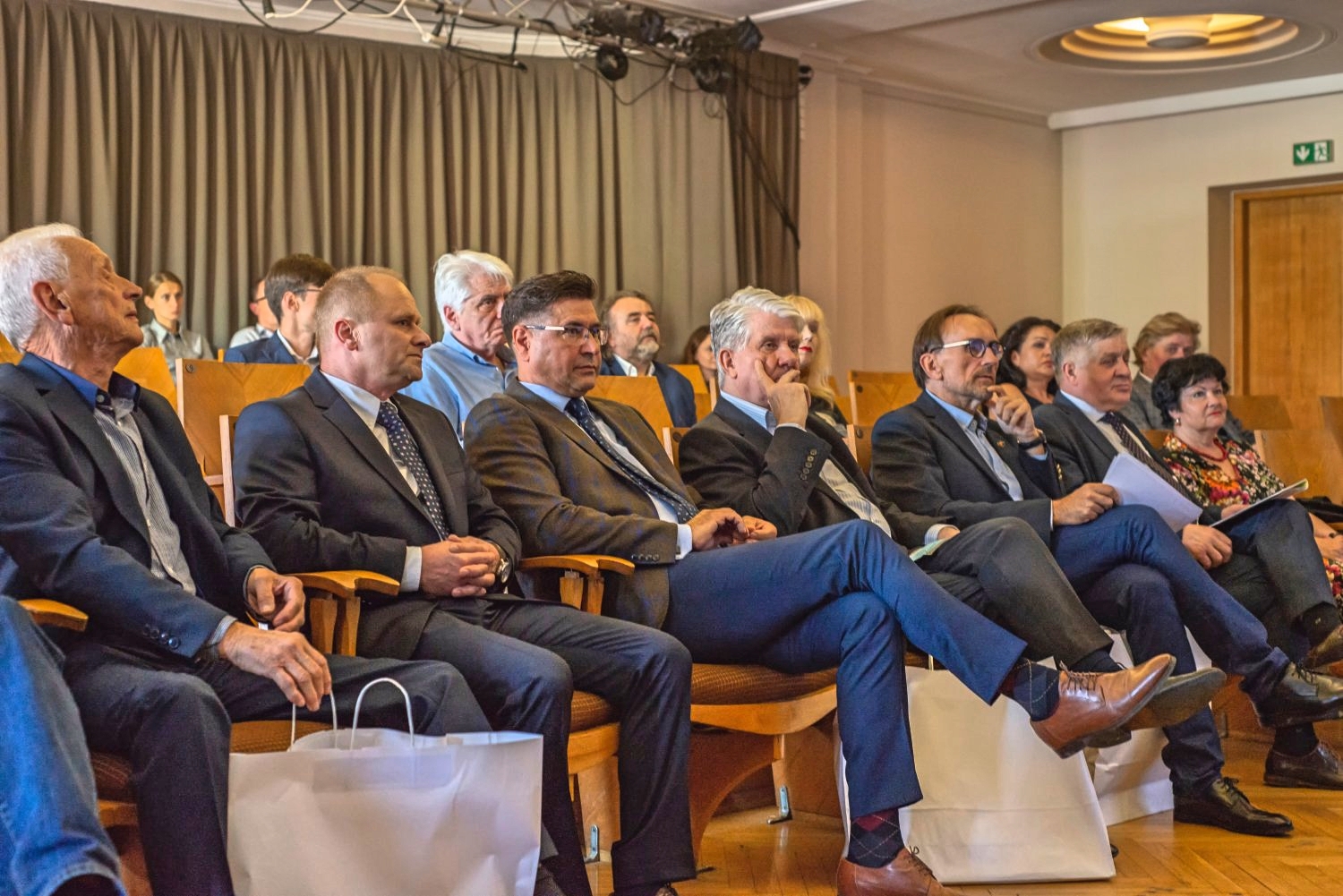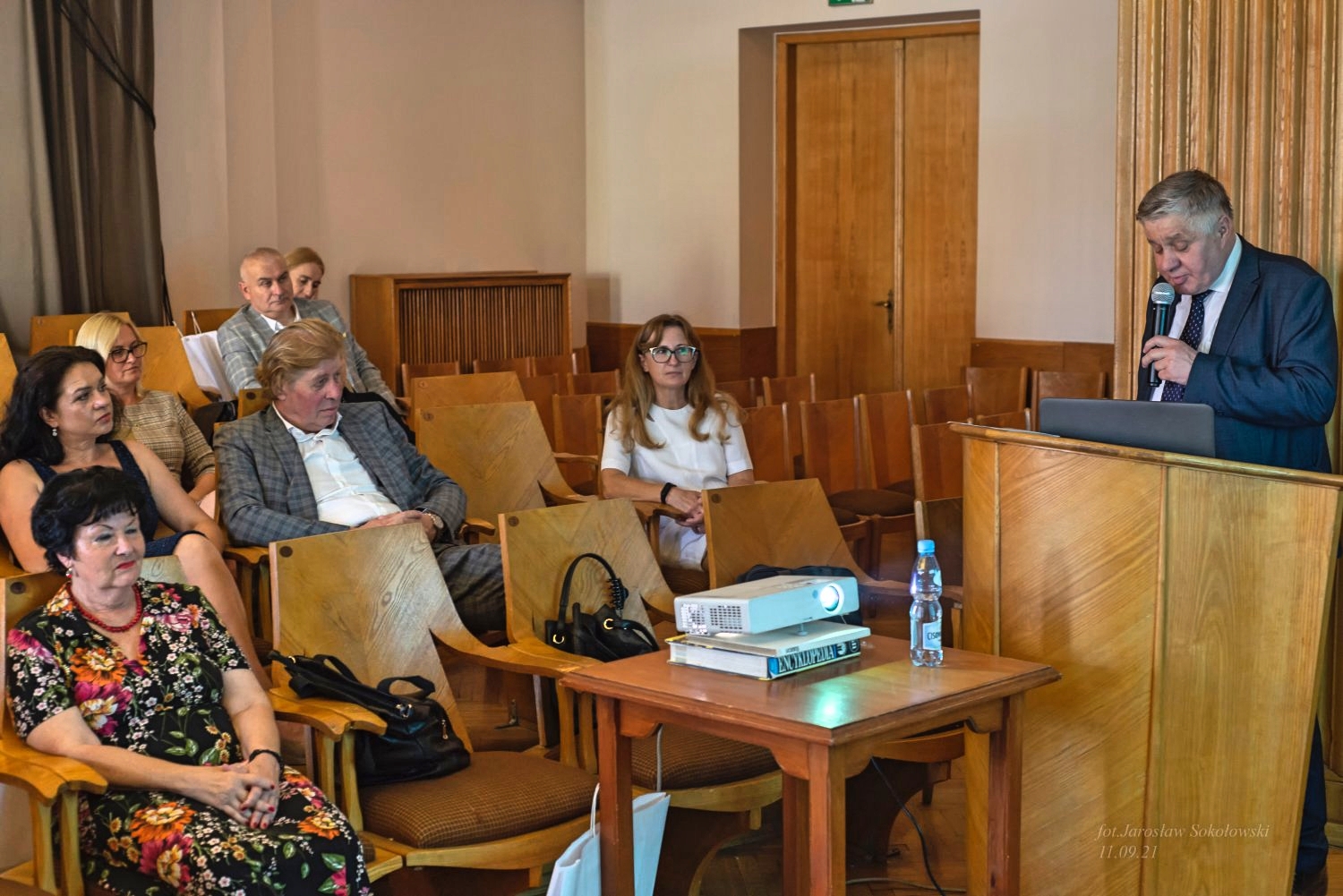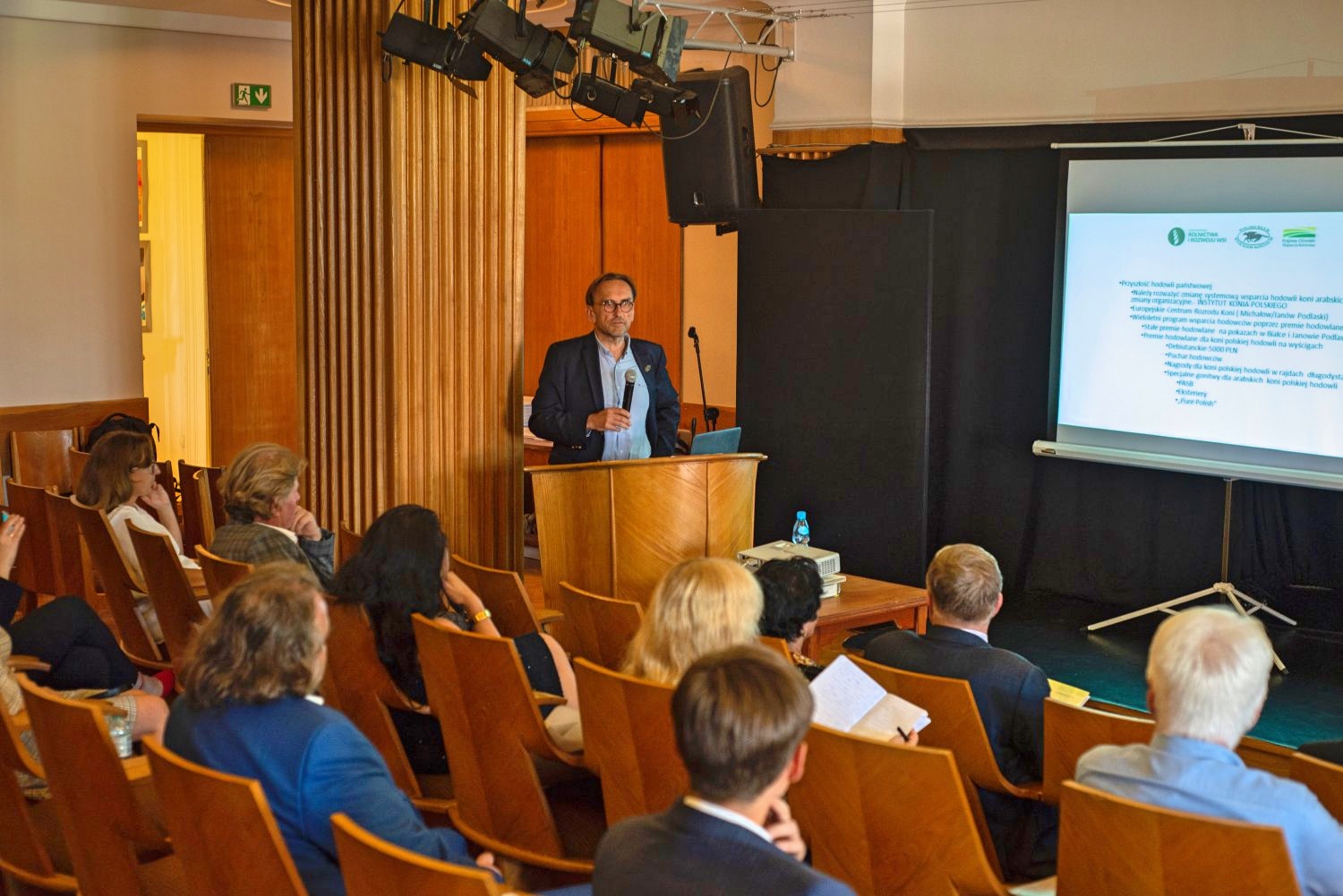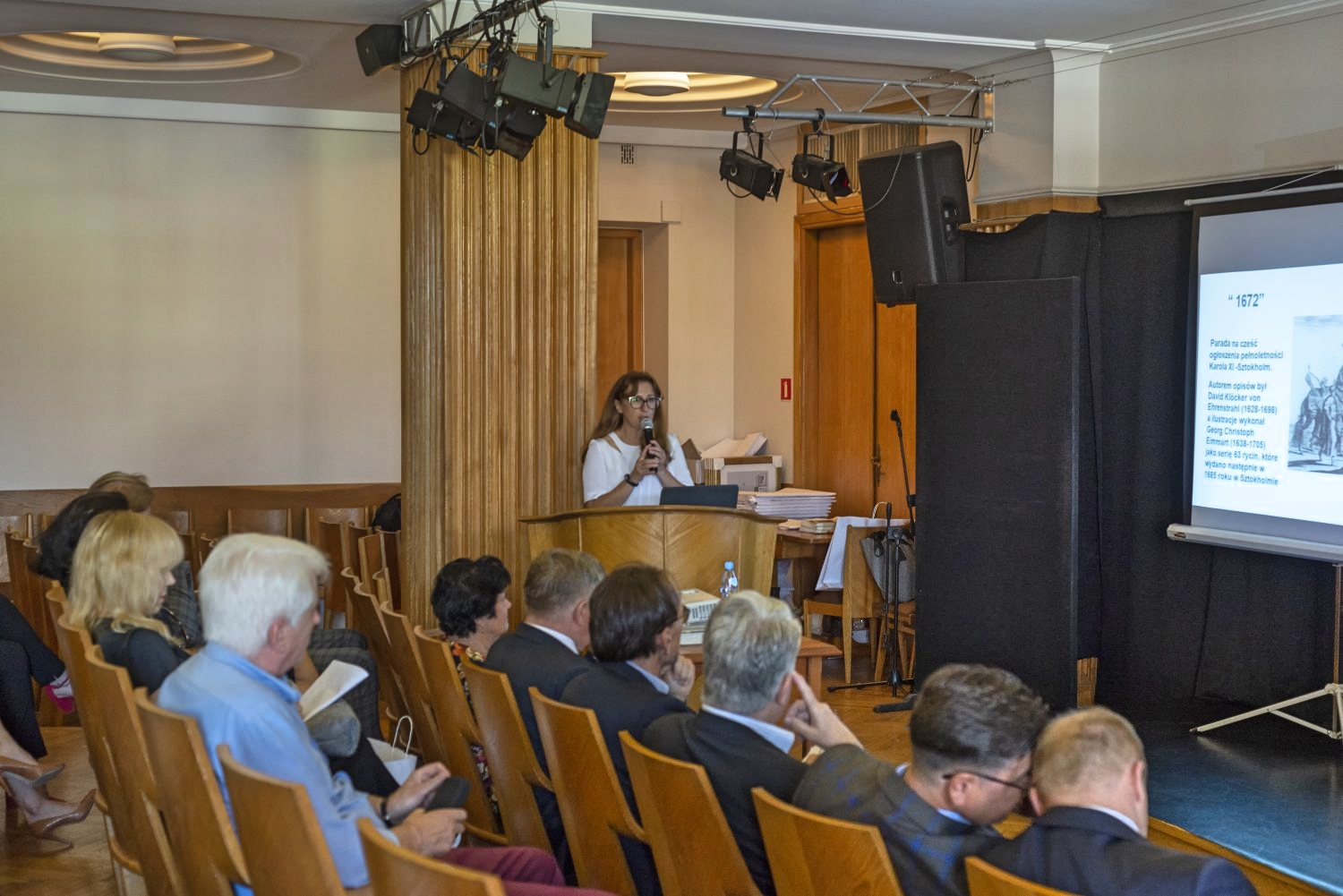EVENTS
FIRST BREEDING CONFERENCE "Where lies the future of the Arabian horses in Poland"
The beautiful town
house situated at the corner of Krakowskie Przedmieście and Plac Zamkowy in Warsaw hosted on
September 11th, 2021 a breeding conference organized by the Pure Polish Arabian Society. The main
objective of that conference was to find answers to the dilemma: where lies the future of the
Arabian horses in Poland. Due to pandemic complications, the date of the event was delayed for
almost ten months. Fortunately, all obstacles have now been overcome and the conference could take
place at last. The House of Literature at Krakowskie Przedmieście 89 with its cosy conference hall
provided a beautiful setting to be enjoyed by the participants of the conference while exchanging
views on the past, present and future of the Arabian horses in Poland. The meeting held in the
Art-Deco styled premises accentuated the connection existing between tradition and present day
issues under discussion, as did the painting featuring a horse displayed at the logo of the Society.
Miniature of the original picture, inspired by a 17th century print and painted by Michał Siemiński
, a well-known artist, served as a beautiful and unique present offered to each and every
participant of the conference.
A painting by the painter Michał Siemiński with the image
of a Hussar horse, based on a drawing by Georg Eimart from 1678, photo: Hanna
Sztuka
The assembled guests were
greeted by Przemysław Sawicki, president of the Pure Polish Arabian Society, who thanked everyone
for coming. Przemysław Sawicki also pointed out that his invitation was extended to all persons
interested in the Arabian horses and their breeding, irrespective of political views held. He
recalled that the Polish Arabian horses, stemming from purebred horses bred on the Polish soil for
many centuries and ameliorated by desert blood, have been so unique that they were often called pure
Polish. Drawing upon that concept, the Pure Polish Arabian Society undertakes efforts to preserve
the brand of Polish Arabian horses and to maintain their identity denoted as “Pure Polish”. The term
“Pure Polish” has gained worldwide recognition as synonymous to quality, beauty and bravery of
Polish Arabian horses. Nowadays, the world breeding is dominated by new breeders with preference for
show horses and race horses selected either for a specific type of beauty or for speed on racetrack.
Faced with a threat of being absorbed by global fashion, the Polish Arabian horse, being “beautiful
and brave” needs special care and attention. Przemysław Sawicki, president of the Pure Polish
Arabian Society, stressed the need to support and promote native horse breeding by the Polish
breeders themselves as well as all those for whom that heritage is important. In a final word he
declared that the Pure Polish Arabian Society will be working to preserve and continue the tradition
of the Polish Arabian horse breeding conducted in the studs of Eastern borderlands ever since 1778,
as proven by historical documentation, and continued in the centuries to follow on the Polish lands.
He also declared a return to the Breeding Program formulated in 1926 by the founders of the Arabian
Horse Breeding Society and present day application of the principles underlying that that
Program.
Conference participants, photo: Jarosław
Sokołowski
With reference to the logo
of the society and the picture displayed in the conference hall representing a 17th century hussar
horse, Hanna Sztuka, the Secretary of the Society, presented the history and historical connotations
of that representation, as well as the place of the hussar horse in the tradition of the Polish
cavalry and horse breeding.
Krzysztof Jurgiel, deputy to the European Parliament, was one of those persons who
accepted the invitation to participate in the conference. Given floor, the former Minister of
Agriculture explained concisely the reasons necessitating changes in the state studs that took place
in 2016. Additionally, Krzysztof Jurgiel offered the breeders his help and support in their efforts
to develop the breeding of the Polish Arabian Horse and to promote the brand, including on the forum
of the European Parliament.
Guest of the
conference, MEP Krzysztof Jurgiel, photo: Jarosław Sokołowski
The agenda of the conference included several
presentations, followed by discussion on the issued raised. Professor Wanda Olech-Piasecka from the
Warsaw University of Life Sciences gave a presentation entitled “The management of horse
population”. That presentation made the audience aware of certain genetic aspects of horse breeding,
the importance of the breeding elite in improving the breed, as well as the traps and
disappointments resulting from the use of commodity crossing. Professor Olech also pointed out that
the practice of selling embryos is very harmful as viewed from the perspective of population
genetics, because it eliminates the breeding elite. During the past twenty years, state studs have
been selling embryos to the detriment of the breeding elite held there.
Due to links existing between the state owned
breeding and private breeding, the situation of the state owned breeding is always important to the
latter. Thus, the issue “Present and future of the state studs” was addressed by Tomasz Chalimoniuk,
a person most apt to do so in his capacity of plenipotentiary of the Minister of Agriculture in
charge of horse breeding in Poland. Tomasz Chalimoniuk showed statistical data illustrating the
situation of the Arabian horse breeding in state studs. He also discussed the financial condition of
the studs concerned and auction results. All these data proved as entirely wrong all theories that
the state studs and state owned breeding are on the verge of destruction. This presentation gave
rise to a very animated discussion among the participants of the conference upon the condition of
horse breeding in Poland. Additionally, many questions were directed to the plenipotentiary. The
discussion that ensued led to a commonly shared conclusion that the entire sector of horse breeding
needs a new impulse. Considering the positive attitude of the present Minister of Agriculture,
changes favouring horse breeding in Poland will be initiated, as Tomasz Chalimoniuk assured the
audience.
Presentation by Tomasz Chalimoniuk,
photo by Jarosław Sokołowski
In her presentation entitled “Breeding of the Arabian horses as Polish
cultural heritage” , Hanna Sztuka discussed how important to our country and how dear to the hearts
of Poles the Arabian horse really is. Using images of beautiful paintings by Polish artists such as
January Suchodolski and Wojciech Kosszak, Hanna Sztuka told the history of the Polish Arabian horse
breeding, so closely connected with the violent history of Poland. Destroyed by many wars ravaging
our country, Arabian horse breeding was carefully rebuilt times and times again, each time
progressing beyond the previous epoch. The presentation of Hanna Sztuka also related the story of
the Polish state studs after the Second World War, where all the surviving Purebred Arabian mares
and stallions were assembled. Simultaneously, a breeding program was introduced there, unique on a
worldwide scale, based on the dam lines and sire lines cultivated since the end of the 18th century.
One of the basic principles of that breeding program was an obligatory bravery trial on racetrack.
After many years, private breeding was restituted using mares from state studs. Presently, the
private breeding of Arabian horses represents a world level. Post war years, very successful to the
Polish breeding, confirmed that the Polish Breeding Program build upon the experience and knowledge
passed from generation to generation and based on a centuries long tradition of Arabian horse
breeding on Polish land is unique and constitutes our cultural heritage.
Hanna Sztuka, photo: Jarosław
Sokołowski
The Polish breeding is
flooded with foreign sires, both in the case of show horses and races horses, but especially among
race horses offspring of foreign sires dominate. Such a situation provokes questions about the
identity of the Polish Arabian horse breeding. The problem was addressed by dr. Maciej Paweł
Grzechnik in his presentation “ Is the Polish Arabian horse Pure Polish”, where he also defined the
concept of the Polish Arabian horse called “Pure Polish”. A very important element of that
definition, not mentioned earlier, is the obligatory bravery trial to be passed by the Polish
Arabian horses. Obligatory bravery trial would distinguish the Polish Arabian horses from other and
constitute a decisive factor in preserving the Polish type of the Arabian horses.
The last point of the
conference was a meeting with the “creators of the legend” invited by the organizers, meaning former
employees of Animex who witnessed the birth of the “Pure Polish” brand. Maciej Paweł Grzechnik
moderated a debate on the “Origins of the Pure Polish brand” with Jerzy Milczarek, former manager of
horse exports division and Marek Grzybowski, a well-known auctioneer. The exclusive character of
that conversation enabled the audience to better understand the beginnings of international
promotion of the “Pure Polish” brand, while the eminent guests imparted in a fascinating and
colourful way their memories and views on the subject Last but not least, Jerzy Milczarek and Marek
Grzybowski shared their opinions about the future of the Arabian horse breeding in Poland as seen
from the perspective of their own knowledge and experience.
From the left, Maciej Grzechnik and special guests: Jerzy Milczarek and Marek Grzybowski,
photo: Hanna Sztuka
The conference
addressed many issues vitally important to the Arabian horse breeding in Poland. These issues not
only constitute an obstacle to the development of breeding, but also create a problem of identity of
that horse race in Poland. Solving these problems largely depends on the politicians and especially
on the minister of agriculture. However, the breeders themselves can also influence the decisions
made by people responsible for horse breeding in our country, as they possess a thorough
consciousness of the needs and objectives of that sector. If that consciousness was raised among the
participants through addressing chosen problems and discussing the issues raised, with a subsequent
formulation of certain conclusions, then the conference fulfilled its goal.
After the conference, the
participants and the invited guests could pursue their discussions during the Breeders’ Evening. Let
the exquisite menu served and the important themes discussed remain a well-guarded secret of that
evening.





